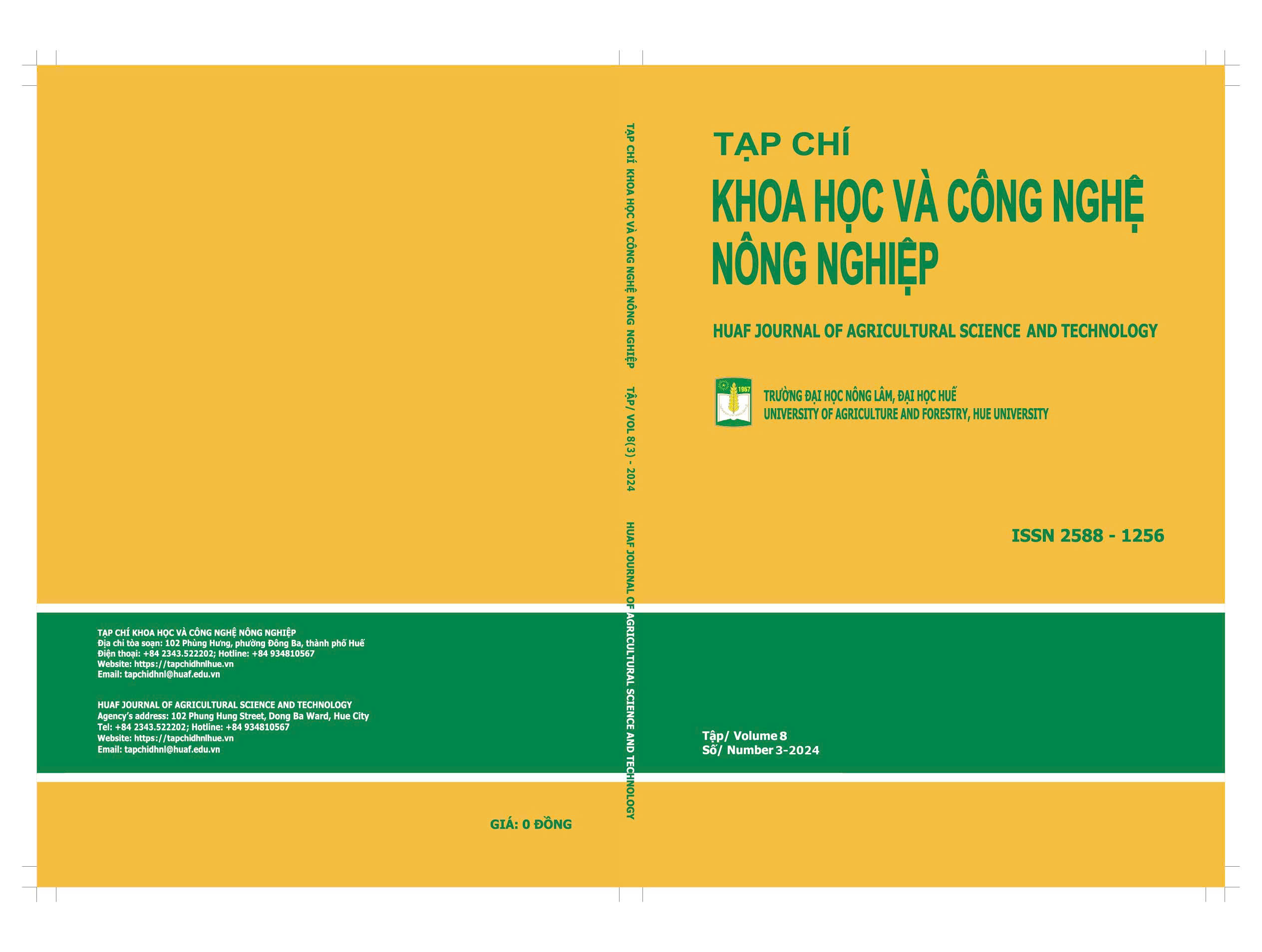##plugins.themes.huaf_theme.article.main##
Abstract
Ophiopogon japonicus is an essential medicine in traditional medicine, mainly used or in combination with other medicinal herbs to treat respiratory diseases, dry coughs, sore throats, tuberculosis, restless sleep etc. The research objective is to determine the appropriate planting season of plant Ophiopogon japonicus to achieve the highest yield and quality of the medicinal herbs. The experiment with 6 different planting time formulas, growning in from October in 2021 to March in 2022, was arranged in a complete randomized block design, three replications. The research results were evaluated after the plant was planted for 2 years, and showed that the planting season was determined from December 15, 2021 to January 15, 2022. Ophiopogon japonicus plants grew and developed well for high yield and good medicinal quality. The average dry tuber yield was from 3.03 to 3.12 tons/ha, the extractant content calculated by dry weight reached from 86.4 to 90.0%, yield of extractant content was from 2696.5 to 2724.1 kg/ha. Thus, Ophiopogon japonicus plants should be grown in Thanh Hoa from December of the previous year to January of the following year.
##plugins.themes.huaf_theme.article.details##
References
Lê Toàn. (2011). Nghiên cứu xây dựng quy trình trồng cây mạch môn làm dược liệu dưới tán rừng tại Phú Thọ. Kết quả thực hiện nhiệm vụ Khoa học và Công nghệ, Sở Khoa học và Công nghệ tỉnh Phú Thọ.
Nguyễn Huy Hoàng, Lê Hữu Cần. (2017). Phương phương thí nghiệm và thống kê sinh học. Trường Đại học Hồng Đức. Nhà xuất bản Đại học Kinh tế quốc dân.
Nguyễn Đình Vinh. (2011). Nghiên cứu kĩ thuật trồng xen cây mạch môn (Ophiopogon japonicus. Wall) trong vườn cây ăn quả và cây công nghiệp lâu năm. Báo cáo tổng kết kết quả thực hiện đề tài thuộc dự án khoa học công nghệ nông nghiệp vốn vay ADB, giai đoạn 2009-2011, Trường Đại học Nông Nghiệp Hà Nội, Bộ Nông nghiệp và Phát triển nông thôn.
Nguyễn Đình Vinh và Nguyễn Thị Thanh Hải. (2012a). Ảnh hưởng của liều lượng bón đạm đến sinh trưởng và năng suất củ mạch môn trên đất xám feralit tại huyện Hạ Hòa, tỉnh Phú Thọ. Tạp chí Khoa học và Phát triển, Trường Đại học Nông Nghiệp Hà Nội, 1(10), 103-110.
Nguyễn Đình Vinh và Nguyễn Thị Thanh Hải. (2012b). Nghiên cứu ảnh hưởng của khoảng cách mật độ trồng đến sinh trưởng và năng suất củ mạch môn (Ophiopogon japonicus Wall) tại huyện Hạ Hòa, tỉnh Phú Thọ, Tạp chí Khoa học và Phát triển, Trường Đại học Nông Nghiệp Hà Nội, 2(10), 272-281.
Viện Dược Liệu. (2004). Cây thuốc và động vật làm thuốc Việt Nam. Nhà xuất bản Khoa học kỹ thuật Việt Nam, (2), 216-220.
Viện Dược Liệu. (2018). Dược điển Việt Nam V. Nhà xuất bản Y học, (2), tr. 1241.
Broussard, M.C. (2007). A Horticutural study of liriope and Ophiopogonic: Nomenclature, Morphology and Culture, Lousiana State University.
Qin, Z., Yi, F., & Sheng, X. (2007). Protective effect of Ophiopogonis polysaccharide MDG-1 on experimental myocardial ischemic Rat. Chinese journal of integrated traditional and Western medicine, 27(12), 1116-20.
Qiu, B.H., & Li, R.M. (2008). Effects polysaccharide in Ophiopogon japonicas on blood glucose in gestational diabetic rats. Journal Iinna University (Medical Education), 4, 367-369.
Xu, S, Mei, C., Zhongqiong, Y., Renyong, J., Yuanfeng, Z., Lixia, L., Guizhou, Y., Xiaoxia, L., Lizi, Y., & Changliang, H. (2016). Effects of polysaccharide from Ophiopogon japonicus on immune response to Newcastle disease vaccine in chicken. Pesquisa Veterinaria Brasileira, 36(12), 1155-1159. DOI: 10.1590/S0100-736X2016001200002
Yu, B.Y., Yin X., & Zhang, C.H. (1991). The immune activity of Ophiopogon japonicus polysaccharide. Carbohydrate Polymers, 5, 286-288
Wang, Z. J., & Luo, H.H. (2008). Isolation, purification and activity study of Radix Ophiopogonic water soluble polysaccharide OPA, Modern Traditional Chinese medicine 5, 77-79.

